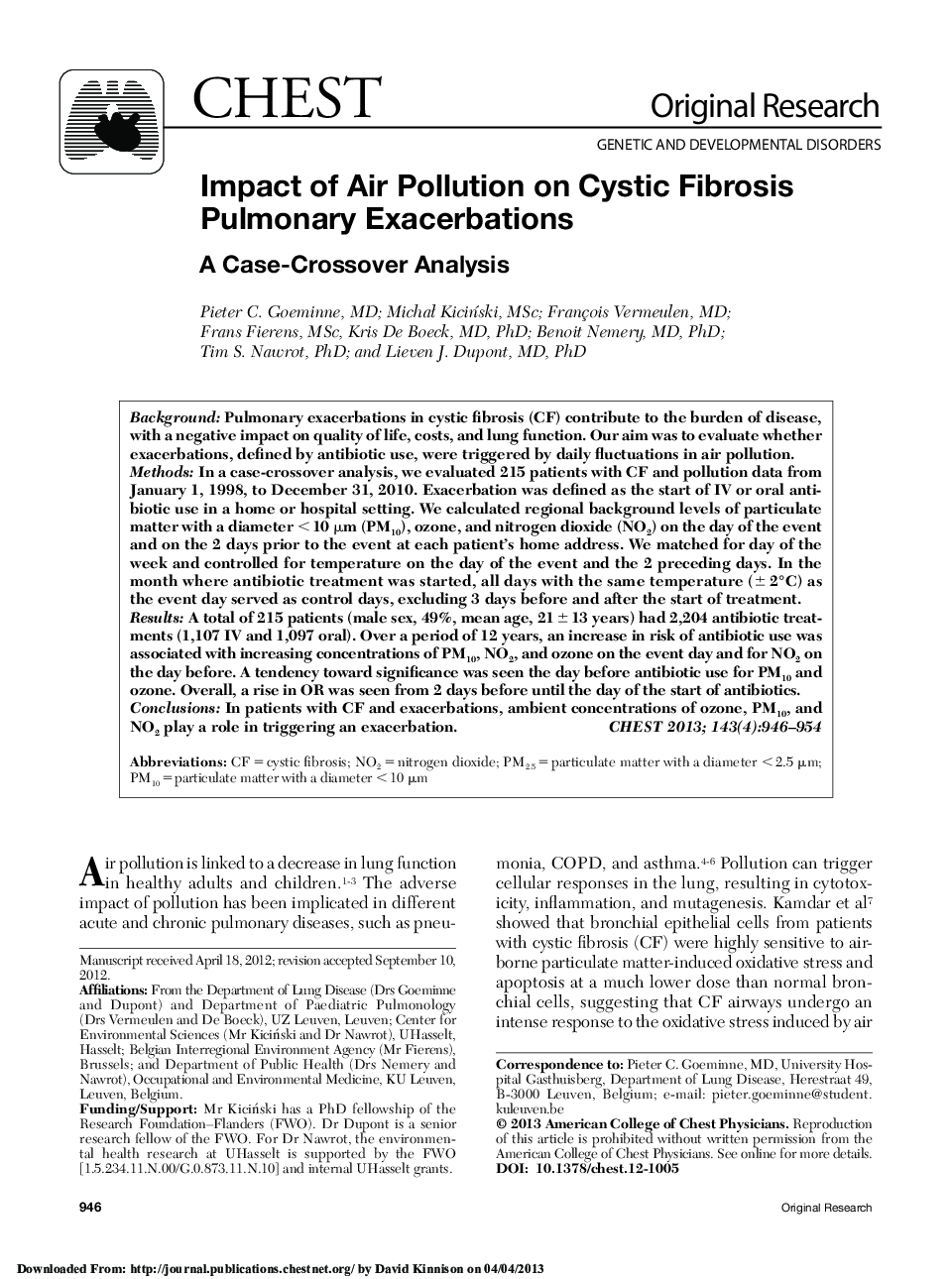| Article ID | Journal | Published Year | Pages | File Type |
|---|---|---|---|---|
| 2900694 | Chest | 2013 | 9 Pages |
BackgroundPulmonary exacerbations in cystic fibrosis (CF) contribute to the burden of disease, with a negative impact on quality of life, costs, and lung function. Our aim was to evaluate whether exacerbations, defined by antibiotic use, were triggered by daily fluctuations in air pollution.MethodsIn a case-crossover analysis, we evaluated 215 patients with CF and pollution data from January 1, 1998, to December 31, 2010. Exacerbation was defined as the start of IV or oral antibiotic use in a home or hospital setting. We calculated regional background levels of particulate matter with a diameter < 10 μm (PM10), ozone, and nitrogen dioxide (NO2) on the day of the event and on the 2 days prior to the event at each patient's home address. We matched for day of the week and controlled for temperature on the day of the event and the 2 preceding days. In the month where antibiotic treatment was started, all days with the same temperature (± 2°C) as the event day served as control days, excluding 3 days before and after the start of treatment.ResultsA total of 215 patients (male sex, 49%, mean age, 21 ± 13 years) had 2,204 antibiotic treatments (1,107 IV and 1,097 oral). Over a period of 12 years, an increase in risk of antibiotic use was associated with increasing concentrations of PM10, NO2, and ozone on the event day and for NO2 on the day before. A tendency toward significance was seen the day before antibiotic use for PM10 and ozone. Overall, a rise in OR was seen from 2 days before until the day of the start of antibiotics.ConclusionsIn patients with CF and exacerbations, ambient concentrations of ozone, PM10, and NO2 play a role in triggering an exacerbation.
